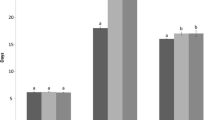Abstract
Artificial diets were formulated and evaluated for their suitability to rear the spotted bollworm, Earias vittella, a major pest of cotton and okra. The most satisfactory diet consisted of maize semolina 11%, wheat bran 4.6%, soybean powder 2.4%, yeast 1.4%, salt mixture 0.9%, ascorbic acid 0.3 %, cellulose 0.9 %, agar 1.8%, water 76.7% and preservatives. The insect was reared on this diet for 10 generations without any adverse effect on its development and reproductive potential.
Résumé
Plusieurs régimes, composés des produits alimentaires facilement disponibles, étaient étudiés pour leur capacité de cultivar le vers taché Earias vittella F., qui est une peste du coton et du gombo. Le régime qui s’est montré le plus satisfaisant comprenait 11% de semoule de maïs, 4.6% de son de blé, 2.4% de soya en poudre, 1.4% de levure, 0.9% d’un melange du sel, 0.3% d’acide ascorbique, 0.9% de cellulose, 1.8% d’agar, 76.7% de l’eau et des conservatifs. L’insectes était cultivée sur ce régime durant 10 generations sans aucun effet défavorable sur son développement et sur sa capacité de reproduction.
Similar content being viewed by others
References
Gothilf S., Kehat M., Jacobson M. and Galun R. (1978) Screening pheromone analogues by EAG technique for biological activity on males of Earias insulana, Heliothis armigera and Spodoptera littoralis. Environ. Entomol. 7, 31–35.
Pant J. C. and Anand M. (1972) An artificial diet for the spotted bollworm, Earias fabia Stoll. Entomol. Newsl. 2, 45–46.
Poitout S., Bues R. and Le Rumer C. (1972) Elevage zur millieu artificiel simple de deux noctuelles parasites du coton Earias insulana et Spodoptera littoralis. Entomol. Exp. Appl. 15, 341–350.
Rahalkar G. W., Tamhankar A. J. and Shantharam K. (1978) An artificial diet for rearing red palm weevil Rhynchophorusferrugineus Oliv. J. Plant. Crops 6, 61–64.
Rahalkar G. W., Harwalkar M. R., Rananavare H. D., Tamhankar A. J. and Shantharam K. (1985) Rhynchophorus ferrugineus. In Handbook of Insect Rearing, Vol.1 (Edited by Singh P. and Moore R.F.), pp. 279–286. Elsevier Science Publishers, Amsterdam.
Tamhankar A. J. (1986) Studies on the reproductive behaviour of Earias vittella (Fabricius) and Earias insulana (Boisduval) and factors governing their reproductive isolation. Ph.D. Thesis. Mahatma Phule Agricultural University, Rahuri, Maharashtra, India.
Author information
Authors and Affiliations
Rights and permissions
About this article
Cite this article
Tamhankar, A.J., Shantharam, K., Harwalkar, M.R. et al. Development of an Artificial Diet for the Laboratory Rearing of the Spotted Bollworm, Earias Vittella (Fabricius) (Lepidoptera: Noctuidae). Int J Trop Insect Sci 13, 241–243 (1992). https://doi.org/10.1017/S1742758400014417
Received:
Revised:
Published:
Issue Date:
DOI: https://doi.org/10.1017/S1742758400014417




